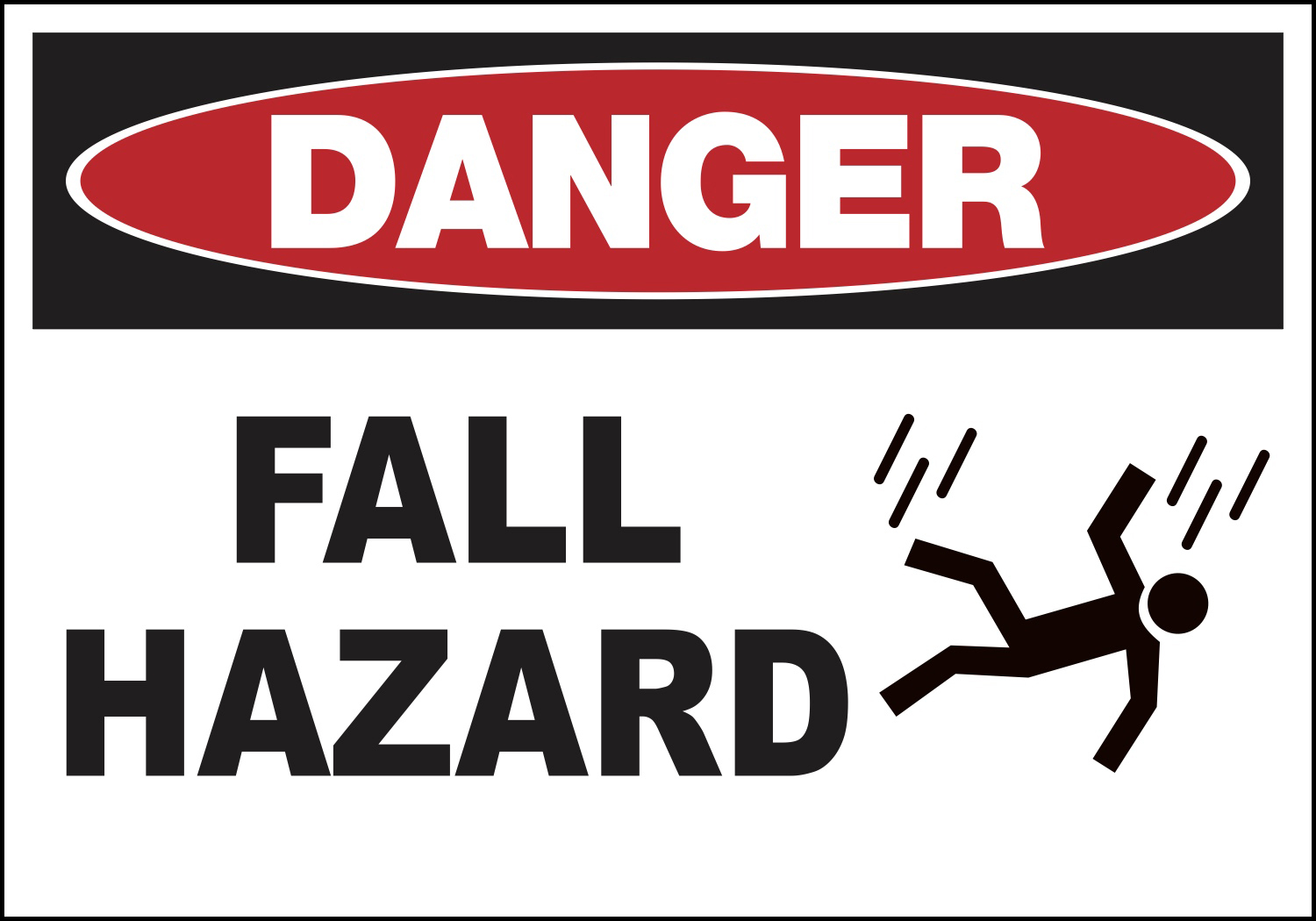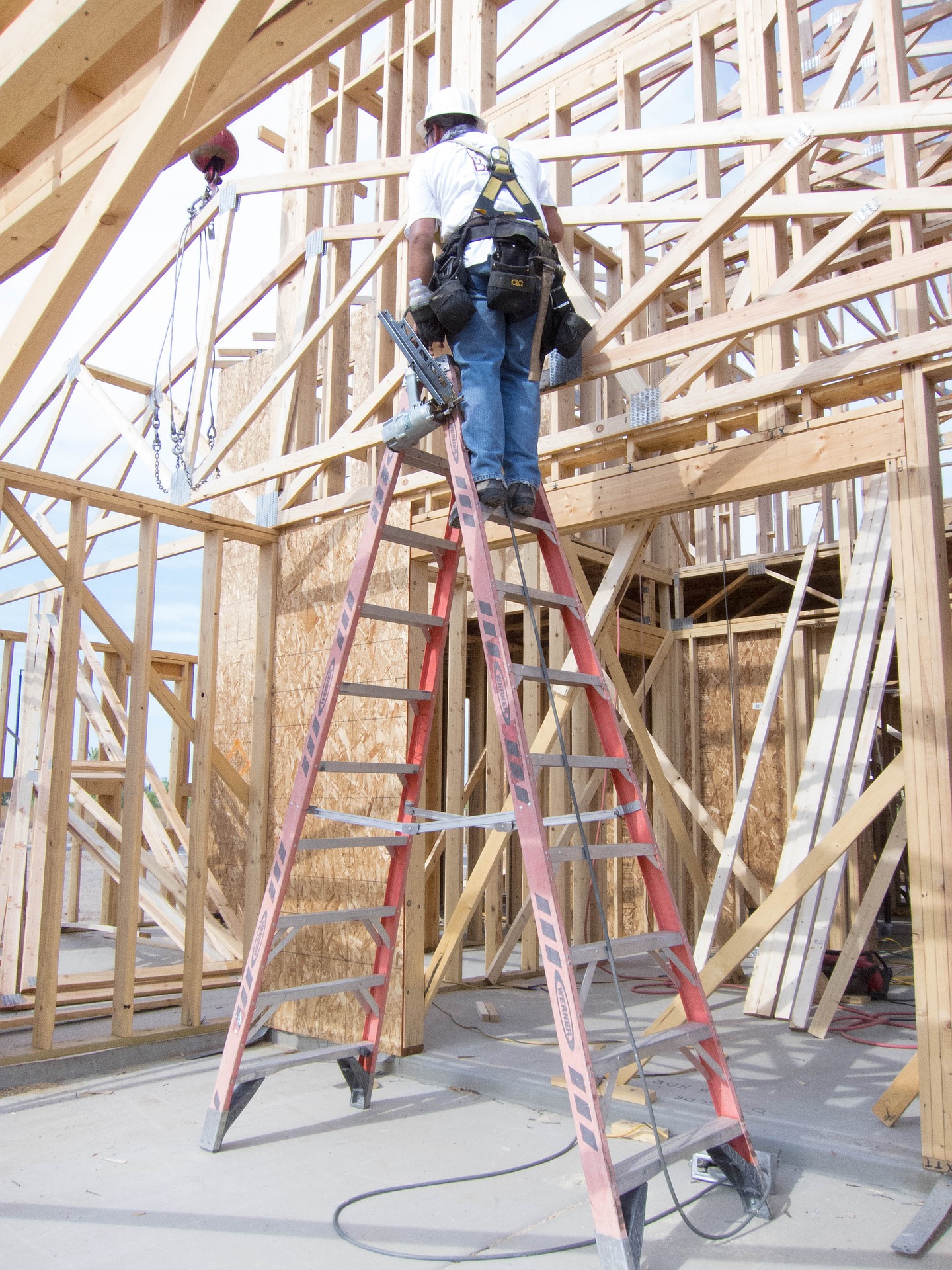Fall Protection for General Industry
May 23rd 2018
Falls are one of the most frequent causes of serious workplace injuries and deaths. In 2017, fall protection for construction was OSHA’s most-cited violation, and inadequate fall protection training for general industry was OSHA’s ninth most-cited violation. This article will focus on fall protection for general industry, and will cover definitions, training, methods of hazard control, and fall safety inspection.

HAZARDS
Many factors can contribute to a fall hazard. It is helpful to categorize these hazards into two main categories: environmental and personal. Environmental hazards are features of your workplace that may cause or contribute to a fall. These include:
- Greasy, oily, wet, or otherwise slippery surfaces
- Moving equipment
- Electrical hazards
- Strong winds or otherwise dangerous weather
- Poor lighting
- Irregular or damaged work surfaces
In addition to environmental factors, personal factors may cause or contribute to a fall. Examples of personal hazards include:
- Improper use of equipment
- Poor concentration
- Lack of training
- Use of medication
IDENTIFYING FALL HAZARDS
Before undertaking work that poses potential fall hazards, an inspection must be conducted to identify all fall hazards. In the course of the inspection, all holes and openings must be identified and controlled.
OSHA defines a hole as “a gap or open space in a floor, roof, horizontal walking-working surface, or similar surface that is at least 2 inches in its least dimension." The definition includes gaps of 2 inches or more, which may seem quite small, because even small holes can pose dangerous tripping hazards. Employers must cover all holes with an approved cover. A cover must be able support twice the maximum load that could be placed on it at any given time.
An opening is defined as “a gap or open space at least 30 inches high and 18 inches wide in a wall, partition, vertical walking-working surface, or similar surface through which a worker can fall to a lower level.” Unprotected windows and missing railings are two common examples of unsafe openings. OSHA requires that fall protection is used whenever employees are exposed to openings or holes.
PROTECTION METHODS
The best way to prevent falling accidents is to eliminate the hazard entirely. For instance, it is better to use an extension tool to reach a high place than to work on a higher level and expose oneself to a fall hazard. However, many workplaces will have unavoidable fall hazards. In these instances, fall protection systems must be in place to prevent accidents. OSHA defines fall protection as “any equipment, device, or system that prevents a worker from falling from an elevation or mitigates the effect of such a fall.” Fall protection include guardrails, safety nets, travel restraint systems, and personal fall arrest systems. This section will define and describe some of the most common methods of fall protection. In general, fall protection systems can be divided into two main categories: passive and active. Passive protection is stationary and does not require active participation from workers once installed. Active fall protection requires rigorous training and the active participation of the employees using them.

PASSIVE SYSTEMS
Guardrails
Guardrails must consist of at least four components: posts, a top rail, a middle rail, and a toe-board. Any guardrail missing one of these components is in violation of OSHA standards. The toe-board is must be at least 4 inches tall and run the entire length of the guardrail. The toe-board serves two purposes: it prevents employees’ feet from slipping over the edge of a walking surface and prevents tools from falling off the guardrail, potentially injuring employees or causing equipment damage on a lower level.
Safety Nets
Safety nets are designed to prevent an employee from falling to a lower level by catching them during a fall. The net is installed directly below the walking surface on which employees are working and should be installed as close as possible to the working surface to limit the length of the fall. The net should be inspected daily to ensure that it is functioning correctly. It is also important make sure the net is free from any tools or debris that might have fallen into the net.
ACTIVE SYSTEMS
Fall arrest systems.
A Fall Arrest System prevents workers from falling to a lower level and reduces the jolt that occurs when a fall is stopped. A personal fall arrest system consists of three main components:
- Full Body Harness
A full body harness consists of straps that are worn around the shoulders, thighs, hips, and buttocks. A full body harness is designed to spread the force of impact across thighs, chest, and shoulders, so that one area of the body is not subjected to a dangerous impact. A full body harness is the only acceptable body-holding device for fall protection. Other harnesses, such as body belts, should only be used for positioning because they do not safely spread the force of impact during a fall.
- Lanyard
The lanyard joins the full body harness to an approved anchorage point. The lanyard must not allow a fall of more than six feet and must not be long enough to allow contact with a lower level. A minimum breaking point of 5,000 lbs. is required. The lanyard must be connected with an approved locking snap hook.
- Anchorage Point
The lanyard must be attached to an anchorage point that can withstand at least twice the force that can be applied to it. It is important to remember that a falling person generates much more force than their body weight alone. For instance, a 200 lb. person may generate 2,000 lbs. of force when falling. Most failures of personal fall arrest systems occur when an inadequate anchorage point is chosen.
An anchorage point must also be completely independent of the means supporting an employee. Guardrails must not be used as anchorage points, because they do not have the requisite stability.
The anchorage point must not allow a fall of more than six feet and should be centered relative the harness as much possible. Centering the anchorage point reduces swinging during a fall.
Travel-restraint systems
A travel restraint system uses a lanyard and a safety belt or body harness to prevent a worker from getting close to a dangerous edge. The length of the lanyard must short enough to prevent the worker from getting too close to a fall hazard.
INSPECTING FALL PROTECTION SYSTEMS
The condition of fall protection equipment is essential to its safety performance. A competent person must inspect fall protection equipment before each use. A competent person is someone who can identify existing and predictable hazards and is authorized to eliminate them. If equipment is found to be unsatisfactory, it must be tagged and removed. If a qualified technician cannot repair the equipment, it must be destroyed.
An inspection must occur any time a fall protection system has been subjected to impact loading during a fall. The system must be removed from use and inspected to ensure all parts of the system are functional. Scaffolding and guardrails must also be inspected. Any damage, slippery surfaces, loose or missing parts, or sharp edges must be corrected before work begins.
Environmental factors may impact the effectiveness of otherwise functional equipment. Slippery or greasy surfaces, moving machinery, electrical wires, and extreme weather or temperatures may impact or degrade your equipment. An environmental inspection before each use of personal fall arrest systems must be part of your fall protection program.
It is sometimes necessary to clean fall protection equipment to keep it free from debris or other potentially degrading substances. To wash fall protection equipment, use warm water and a mild detergent, and rinse in warm water. Equipment should be dried at warm temperature, and stored in clean, dry, temperature-controlled areas.
Finally, good housekeeping, or the process of generally keeping a workplace free of clutter or spills, is important aspect of a functioning safety program. Good housekeeping is the responsibility of every employee. All spills and debris should be cleaned up immediately.
CONCLUSION
Fall protection is an integral part of workplace safety. All holes and openings must be identified and controlled. Elevated working surfaces must have either passive or active fall protection systems installed, depending on the hazards posed by a given situation. If personal fall arrest systems are necessary, workers must be thoroughly trained in their use. Finally, qualified individuals must inspect the work environment and all safety equipment to make sure all safety requirements are met. For more information about fall protection, visit: https://www.osha.gov/SLTC/fallprotection/.
